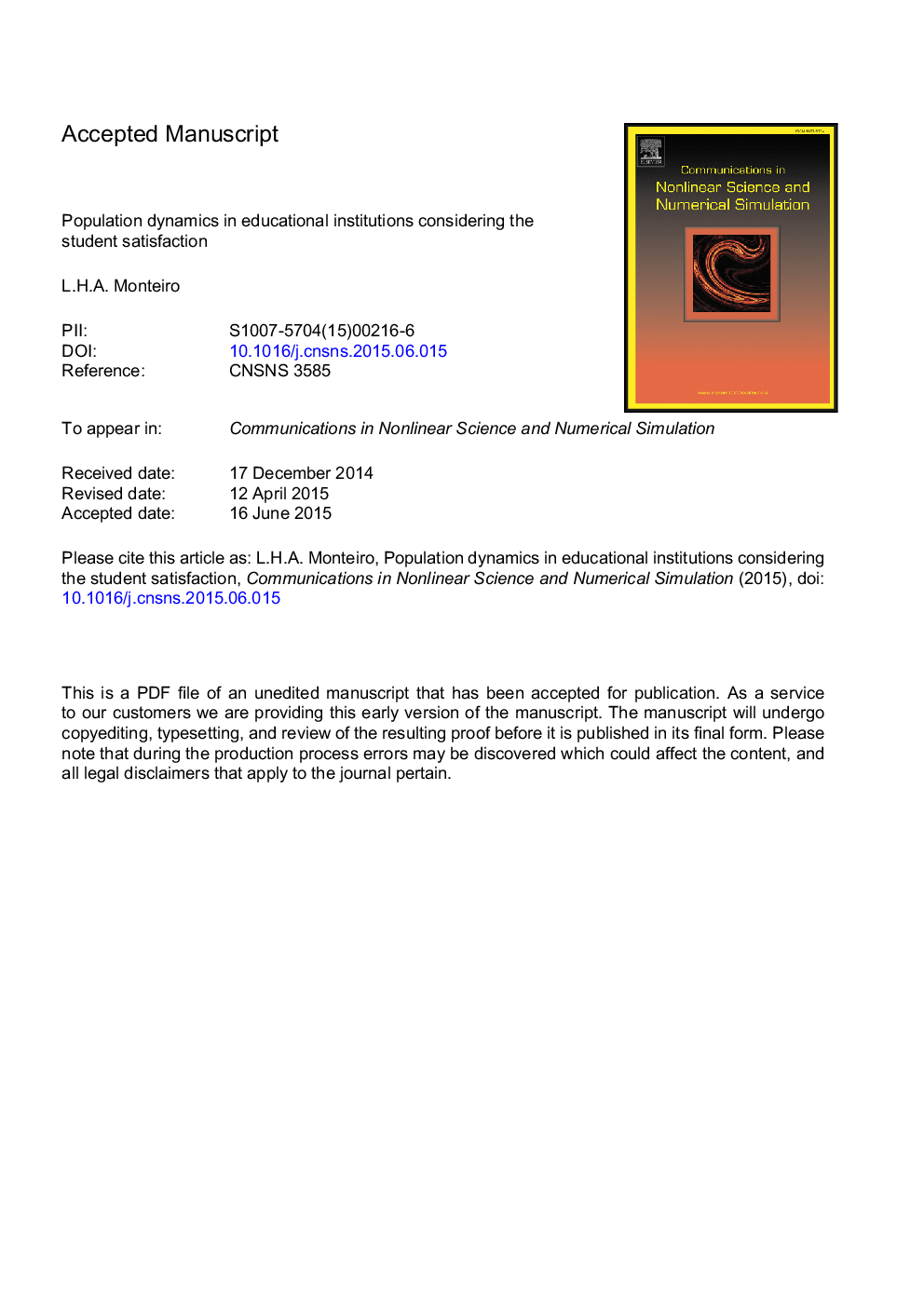| کد مقاله | کد نشریه | سال انتشار | مقاله انگلیسی | نسخه تمام متن |
|---|---|---|---|---|
| 7155304 | 1462615 | 2016 | 19 صفحه PDF | دانلود رایگان |
عنوان انگلیسی مقاله ISI
Population dynamics in educational institutions considering the student satisfaction
ترجمه فارسی عنوان
دینامیک جمعیت در مؤسسات آموزشی با توجه به رضایت دانشجویان
دانلود مقاله + سفارش ترجمه
دانلود مقاله ISI انگلیسی
رایگان برای ایرانیان
کلمات کلیدی
دوختن، موسسه تحصیلی، بیماری همه گیر، دینامیک جمعیت،
ترجمه چکیده
در اینجا، یک مدل ریاضی زمان گسسته و نمایشی از تکامل زمانی تعداد دانش آموزان در یک موسسه آموزشی ارائه شده و آنالیز می شود. در این رویکرد، دانش آموزان به دو گروه تقسیم می شوند: افرادی که از عملکرد تحصیلی و محیط های یادگیری خود و کسانی که از آنها نیست راضی هستند. دینامیک جمعیت این دو گروه به واسطه فرضیه های زیر حکومت می شود: همه دانش آموزانی که اخیرا ثبت نام کرده اند باید رضایت داشته باشند؛ دانش آموزان می توانند خود به خود حالت رضایت خود را تغییر دهند؛ (رفع) رضایت می تواند از طریق ارتباطات اجتماعی به عنوان بیماری های مسری گسترش یابد؛ رها کردن دانش آموزان عمدتا جمعیت ناراضی را کاهش می دهد؛ و هر دو نوع دانشجویان می توانند دیپلم خود را کسب کنند. نتایج تحلیلی و عددی از نقطه نظر مدیریت نهادی به دست می آید.
موضوعات مرتبط
مهندسی و علوم پایه
سایر رشته های مهندسی
مهندسی مکانیک
چکیده انگلیسی
Here, a discrete-time mathematical model representing the temporal evolution of the number of students in an educational institution is proposed and analyzed. In this approach, the students are divided into two groups: the ones who are satisfied with their academic performances and learning environments and the ones who are not. The population dynamics of these two groups is ruled by the following assumptions: all newly enrolled students are supposed to be satisfied; students can spontaneously modify their state of satisfaction; (dis)satisfaction can be propagated via social contacts as contagious diseases; student dropout primarily reduces the dissatisfied population; and both kinds of students can earn their diplomas. Analytical and numerical results are obtained and discussed from an institutional management point of view.
ناشر
Database: Elsevier - ScienceDirect (ساینس دایرکت)
Journal: Communications in Nonlinear Science and Numerical Simulation - Volume 30, Issues 1â3, January 2016, Pages 236-242
Journal: Communications in Nonlinear Science and Numerical Simulation - Volume 30, Issues 1â3, January 2016, Pages 236-242
نویسندگان
L.H.A. Monteiro,
